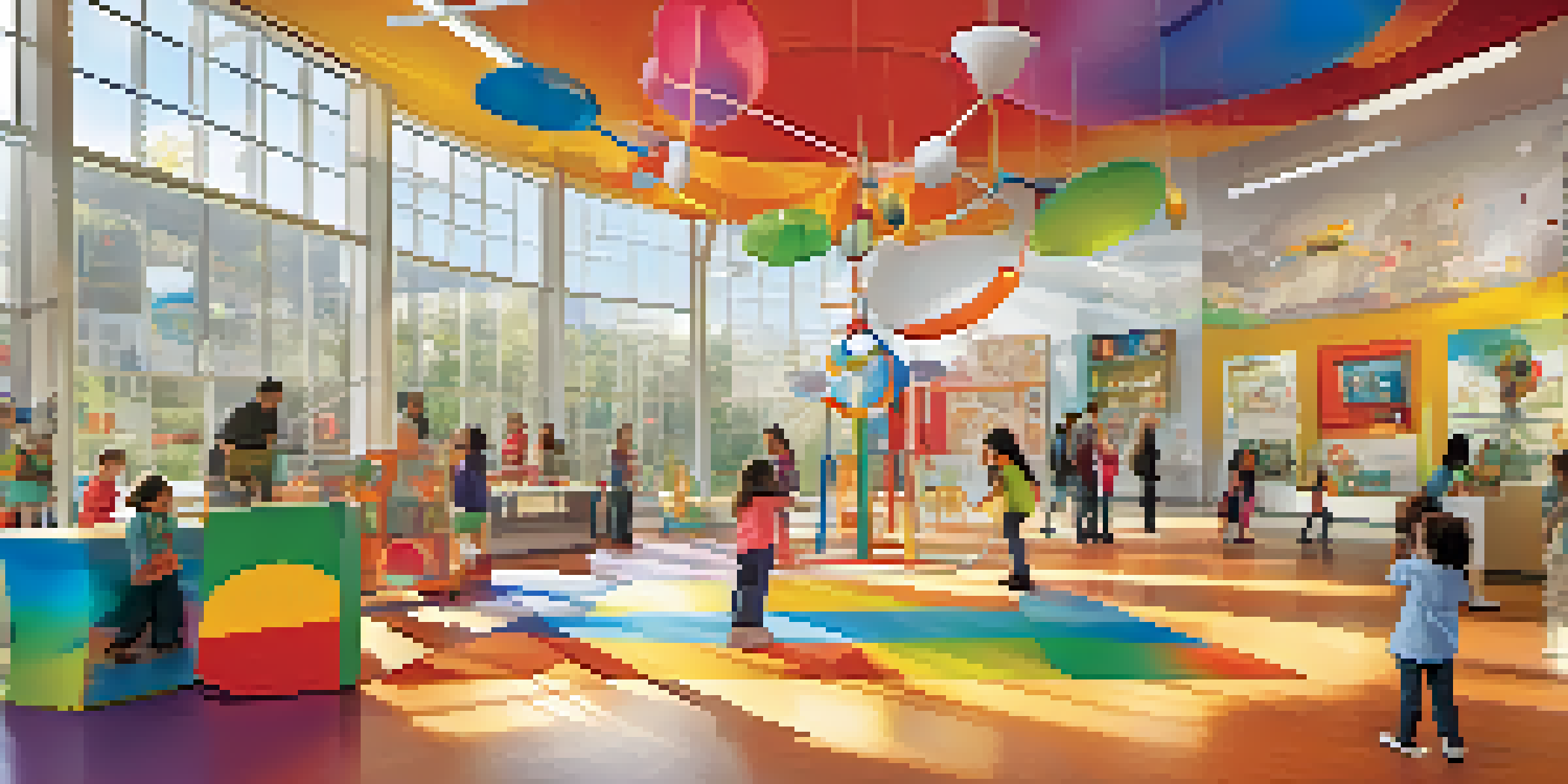Interactive Museums for Kids in Brazil: Learning and Fun

The Rise of Interactive Museums in Brazil for Kids
In recent years, Brazil has seen a surge in interactive museums designed specifically for children. These museums aim to blend learning with fun, creating engaging environments that spark curiosity. They allow kids to touch, play, and explore, making education an enjoyable experience.
The best way to predict the future is to create it.
Unlike traditional museums where exhibits are often off-limits, interactive museums encourage hands-on participation. This approach not only keeps children entertained but also fosters a deeper understanding of various subjects. Parents and educators alike appreciate this innovative way of learning.
From science and technology to art and culture, these museums cover a wide range of topics. By incorporating interactive elements, they cater to different learning styles, ensuring every child can find joy in discovery.
Top Interactive Museums in Brazil Worth Visiting
When it comes to interactive museums in Brazil, a few stand out for their creativity and educational value. The 'Museu da Criança' in São Paulo is a fantastic example, offering hands-on exhibits that cater to young minds. Here, children can engage in role-playing activities that promote social skills and creativity.

Another gem is the 'Museu Catavento', also in São Paulo, which focuses on science and technology. Kids can experiment with physics through fun installations, such as a giant pendulum that illustrates motion. This museum makes learning about complex concepts entertaining and understandable.
Interactive Museums Boost Learning
These museums combine fun and education, allowing children to explore and engage with various subjects through hands-on experiences.
In Rio de Janeiro, the 'Museu do Amanhã' (Museum of Tomorrow) presents a unique blend of art and science. Its interactive displays encourage children to think about the future and their role in it, inspiring them to be curious about sustainability and innovation.
Benefits of Visiting Interactive Museums for Children
Visiting interactive museums offers numerous benefits for children's development. Engaging in hands-on activities not only makes learning fun but also enhances critical thinking skills. As kids explore, they learn to ask questions and solve problems, which is essential for their growth.
Education is not the filling of a pail, but the lighting of a fire.
Another significant advantage is the promotion of teamwork and social interaction. Many exhibits are designed for group participation, allowing children to collaborate and communicate with their peers. This experience helps them build friendships and develop social skills in a natural setting.
Moreover, these museums often cater to various age groups, ensuring that every child can find something of interest. This inclusivity makes family outings enjoyable, as parents can join in the fun and learn alongside their children.
How Interactive Learning Enhances Retention
Interactive learning is known to enhance information retention significantly. When children engage with content actively, they are more likely to remember what they've learned. This hands-on approach stimulates multiple senses, making the experience more memorable.
For instance, when a child conducts a simple science experiment at a museum, they are not just passively absorbing information. Instead, they are actively involved in the process, which creates a stronger mental connection to the material. This method can lead to a lasting interest in subjects like science and technology.
Social Skills Through Collaboration
Interactive exhibits encourage teamwork and social interaction, helping children build friendships and develop essential social skills.
Additionally, interactive museums often incorporate storytelling and play, making learning feel less like a chore. When children associate learning with fun, they are more likely to pursue knowledge outside of the museum environment, fostering a lifelong love of learning.
Planning Your Visit to an Interactive Museum
Planning a visit to an interactive museum can be both exciting and straightforward. Start by checking the museum's website for special exhibits, events, or workshops that may be happening during your visit. This information can help you tailor your experience to your child's interests.
It's also a good idea to consider the best times to visit. Weekdays are often less crowded, allowing for a more enjoyable experience. Arriving early can give you the chance to explore exhibits before larger groups arrive, ensuring you have ample time for hands-on activities.
Lastly, don't forget to discuss the plan with your child! Involving them in the decision-making process can heighten their excitement and make them feel more invested in the experience. This simple step can turn an ordinary museum visit into an eagerly anticipated adventure.
Safety Measures in Interactive Museums
Safety is a top priority at interactive museums, especially when children are involved. Many museums have implemented measures to ensure a safe environment while still promoting exploration and fun. Regular cleaning and sanitization of exhibits are common practices, especially in the wake of recent health concerns.
Additionally, museums often provide clear guidelines for parents and children to follow. These may include instructions on how to interact with exhibits properly and reminders to wash hands after certain activities. By prioritizing safety, museums can create a worry-free atmosphere for families.
Planning an Exciting Visit
Proper planning, including checking for special events and choosing less crowded times, can enhance the overall experience of visiting an interactive museum.
Parents can also play a role in ensuring their children's safety during their visit. Keeping an eye on little ones, encouraging them to ask questions, and explaining the importance of following museum rules can enhance the experience while maintaining a safe environment.
Inspiring Future Generations Through Interactive Experiences
Interactive museums not only provide fun but are also vital in inspiring future generations. By exposing children to various fields of knowledge, they ignite a passion for learning and discovery. This early engagement can shape their interests and career aspirations as they grow.
Moreover, these museums often showcase innovations and cultural heritage, helping children understand their place in the world. This connection to history and science can motivate them to think critically about the future and their role in it. Such experiences are crucial in cultivating informed and engaged citizens.

Ultimately, interactive museums serve as a bridge between education and enjoyment. By making learning an adventure, they empower children to explore, ask questions, and dream big, setting the foundation for a brighter future.